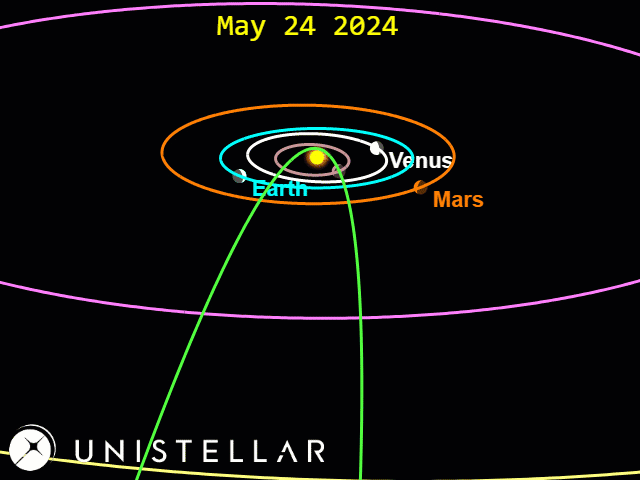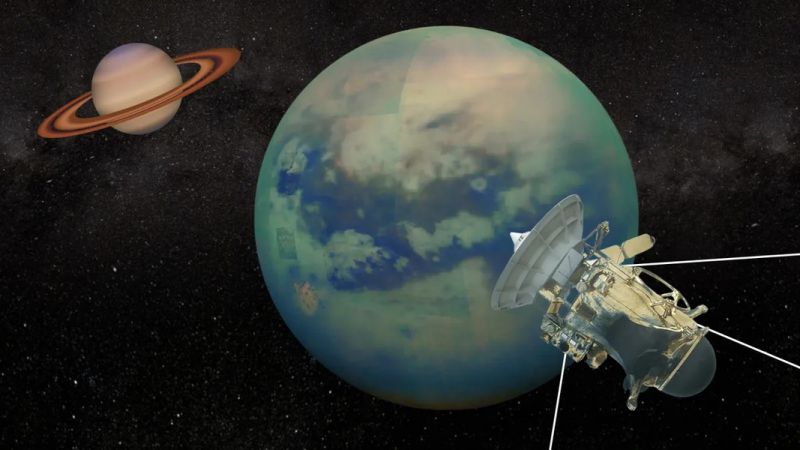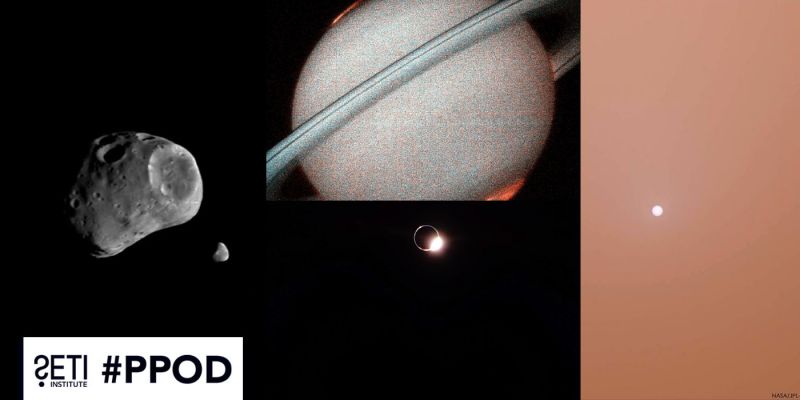
When Comet G3 reached perihelion, comet watchers observed a sharp increase in brightness as the comet reached an estimated magnitude of -3.5, rivaling some of the brightest stars in the sky. Its proximity to the Sun made it difficult to track, but as the comet moved away from the Sun, it transformed into a stunning naked-eye object in the evening twilight for observers in the Southern Hemisphere. However, when astronomers were able to observe it again, they noticed something unusual—the comet’s nucleus had seemingly disintegrated. Typically, a bright central condensation (the solid nucleus) would be expected at the leading edge of its magnificent tail.
On January 24, 2025, Citizen Astronomer Darren Rivett’s observations confirmed there was no nuceus at all—C/2024 G3 had truly become a “headless” comet. Comet G3 likely lost its head due thermal stress from our nearby Sun! Astronomers even noticed that the comet appeared to outburst before the disintegration, further indicating that the Sun is reponsible for this cometary decapitation. Despite losing its nucleus, the comet’s spectacular tail remained visible, putting on a breathtaking display in the twilight sky. Though it is still possible to observe the with a Unistellar telescope, the comet is fading quickly as it recedes into the depths of space.


Original Posted on 06/18/2024
As the cosmos continues to surprise and delight us with its celestial wonders, a new comet is making its debut in the inner solar system: Comet C/2024 G3 (ATLAS). Discovered on April 5, 2024, by the Asteroid Terrestrial-impact Last Alert System (ATLAS) search program, this long-period comet hails from the distant Oort Cloud, and it’s bringing a whole lot of unpredictable excitement with it! Although G3 won’t fly by our planet until January of 2025, the UNISTELLAR Network is already on top of tracking this cosmic explorer.
A Journey from the Outer Reaches
Comet G3 is on its first voyage into the inner solar system, meaning it’s packed with volatile materials that have never been exposed to the Sun’s warmth before. This makes its behavior somewhat unpredictable, and astronomers are eagerly watching to see what surprises it might have in store.
This solar system traveler will be putting on its main show for the southern hemisphere. Northern hemisphere observers might catch a glimpse around perihelion, but it will need to shine exceptionally bright to be seen in twilight skies due to the low angular separation between it and the Sun as seen from Earth. The excitement builds as predictions suggest it could peak in brightness at perihelion, the closest point in its orbit to the Sun.

A Fiery Encounter
As Comet G3 approaches perihelion, it will venture extremely close, only 0.1 Earth-Sun distances, to our star. There’s a genuine concern (or thrill, depending on your perspective) that it could burn up and disintegrate during this fiery encounter. For those of us who love cosmic drama, there’s a glimmer of hope that we might witness this spectacular process firsthand – especially with consistent observations from UNISTELLAR observers!
Near its close approach to the Sun, Comet G3 could reach 0th magnitude, which is as bright as the star Vega in our skies and therefore observable with the naked eye! G3 could even appear more luminous due to the effects of forward scattering that it is expected to experience like Comet 2023/A3. This phenomenon occurs when the comet’s dust particles scatter sunlight in a forward direction, potentially enhancing its brightness dramatically.
Early Detection
Comet G3 won’t reach perihelion until January 13, 2025, when it will then move on to fly close to the Earth on January 14. Although G3 is predicted to become bright, it is presently quite faint as it travels inward from the outskirts of our solar system.
At the beginning of June 2024, our dedicated UNISTELLAR observers detected Comet G3, despite its faint magnitude of around 17.5 at the time. Below are the two observations showing the detection of this exciting comet from Namibia and Australia. These detections show that the UNISTELLAR Network should be able to watch this comet’s activity all the way through to next year, when it flies by the Sun and Earth! Catching Comet G3 at this dim stage of its expedition, where the UNISTELLAR images showed its brightness to be 17.45 mag, is a record for the UNISTELLAR Network’s Cometary Activity Program.
As we prepare for the grand celestial show, keep your UNISTELLAR telescopes and binoculars ready. Comet G3’s journey through our solar neighborhood promises to be a thrilling ride, full of surprises and cosmic fireworks. Whether it blazes brightly in the sky or puts on a dramatic disintegration display, this comet is definitely one to watch. Stay tuned, stargazers, for updates on this celestial visitor as it continues its journey towards the Sun!


Bottom: C/2023 G3 imaged by Darren Rivett in Australia with his EVSCOPE1. Although there are stars crowding the field, Cometary Activity Program Lead Dr. Ariel Graykowski measured the comet’s brightness oto be 17.45 +/- 0.5 mag. That’s a record faintness for observations with To make a Science observation, visit the Comets Tutorial Page and follow the instructions for B: The comet is NOT yet in the App Catalog.
In the Recording field be sure the following information is entered:
- Record duration : 20min
- Exposure time : 3971ms
- Gain : 25db
- Make at least 2 recordings.
When you are done, don’t forget to submit a Comet Observation Report. Happy Comet Watching!
This article was originally posted at science.unistellar.com.





